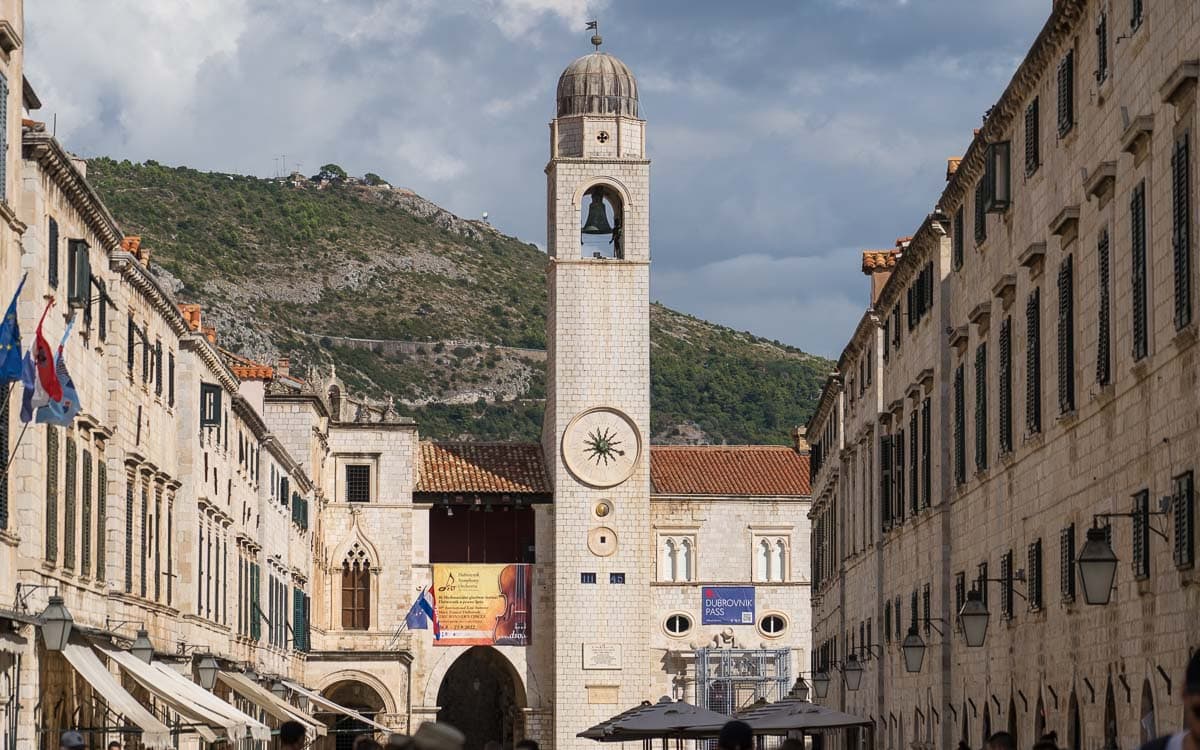
Located at the eastern end of Stradun, bordering Luža Square and Sponza Palace, stands the Dubrovnik Bell Tower. At 31 meters (102 feet) tall, it is one of the tallest structures in Old Town Dubrovnik. The tower is also known as City Bell Tower or Dubrovnik Clock Tower.
Initially built in 1444, the Dubrovnik Bell Tower endured significant damage during the 1667 Dubrovnik earthquake and other seismic events.
By the early 19th century, the tower began to lean toward the Stradun, leading to its demolition in 1928. The following year, it was reconstructed according to its original design.
The 1979 Montenegro earthquake caused further damage to the tower, leading to its restoration between 1987 and 1988.
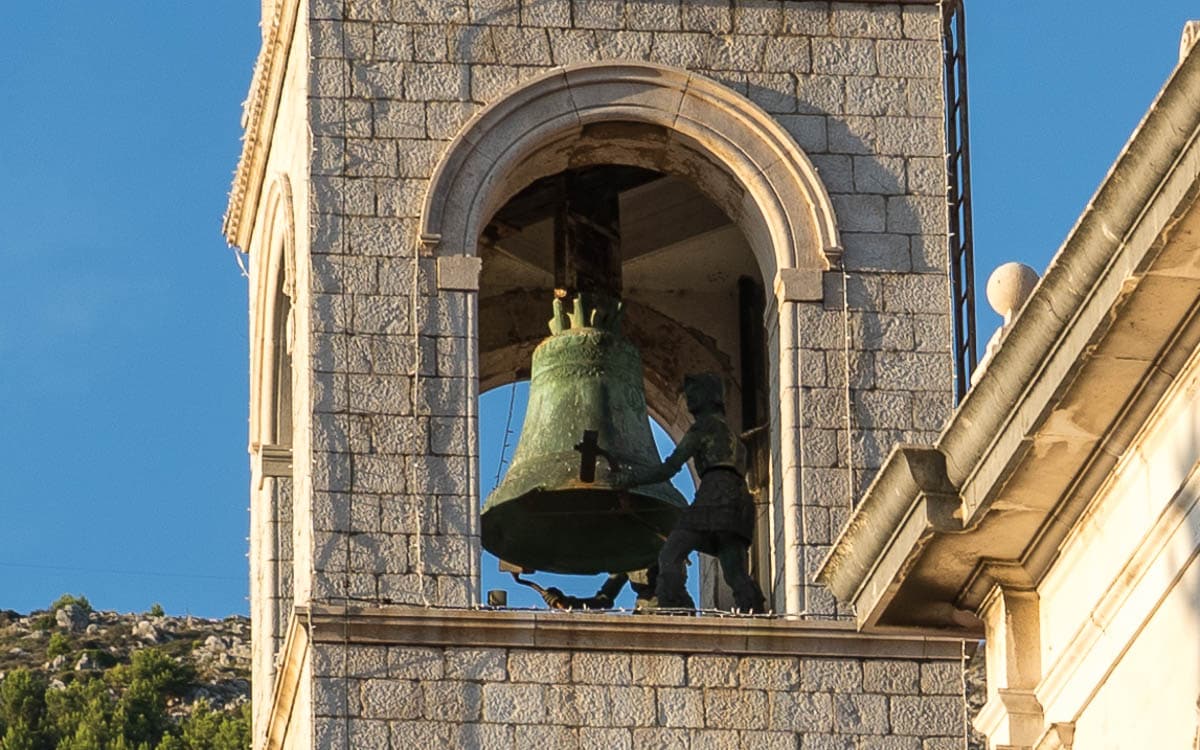
Hanging inside the slim, dome-capped tower is a bronze bell cast by Ivan Rabljanin, a Croatian bronze caster and bell maker. While the tower is not original, the bell is.
On the hour, two jacquemarts (mechanical figures with hammers) strike the bell. These figures, known locally as Maro and Baro or the “Zelenci” (Green Men), mark time by hitting the bell with their hammers. They are called the “Green Men” due to their green patina.
Over the years, the bell tower has played an important role in the everyday life of Dubrovnik’s residents by announcing the time and significant events.
Today, the tower symbolizes Dubrovnik’s resilience and ability to endure, even amid natural disasters, wars, and other challenges. While visitors typically cannot access the interior of the bell tower, they can appreciate its architecture and significance from the Stradun and nearby areas.
Dubrovnik Bell Tower Information
Hours
24 hours
Admission
Free
Address
20000, Grad, Dubrovnik, Croatia
GPS Coordinates: 42.64097,18.11058
Map
Nearby Sights
Small Onofrio's Fountain

Located at the eastern end of Stradun, off Luža Square, is the historic Small Onofrio's Fountain, an ornately decorated octagonal fountain. The small fountain, often overlooked by tourists, played an essential role in the history of Dubrovnik's water supply. Italian architect Onofrio della Cava designed and constructed the fountain between 1440 and 1442.
Orlando's Column
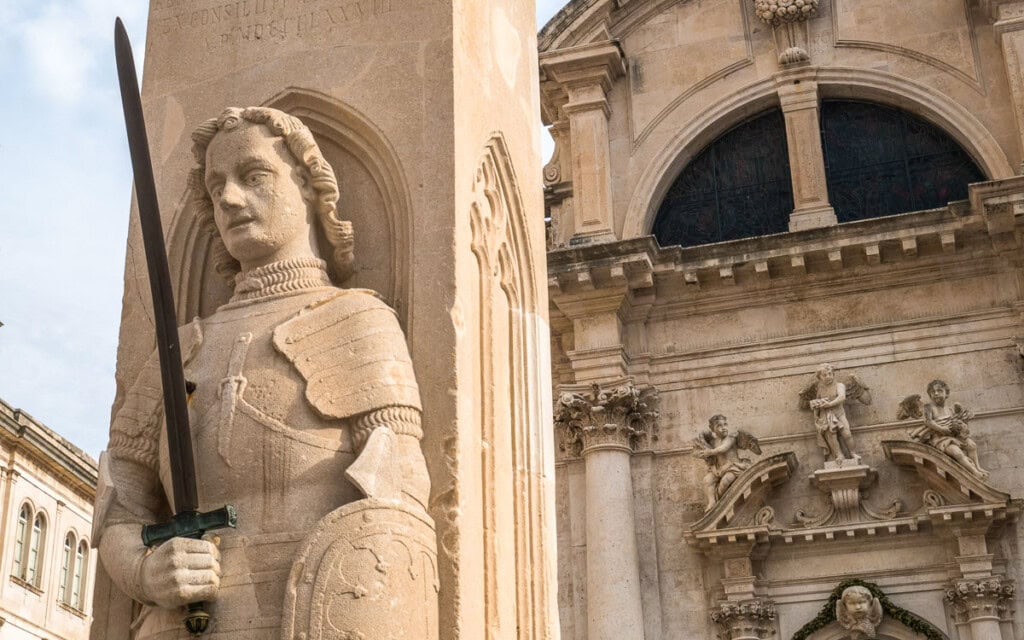
In the center of Luža Square, on the eastern end of Stradun, is Orlando's Column, a historic stone monument dating back to 1418. Carved into the statue is a heroic medieval knight who defended Dubrovnik from invaders. In 1418, Bonino di Jacopo, an Italian master sculptor from Milan, built the column with the help of local sculptor Antun Dubrovčanin.
Church of St. Blaise
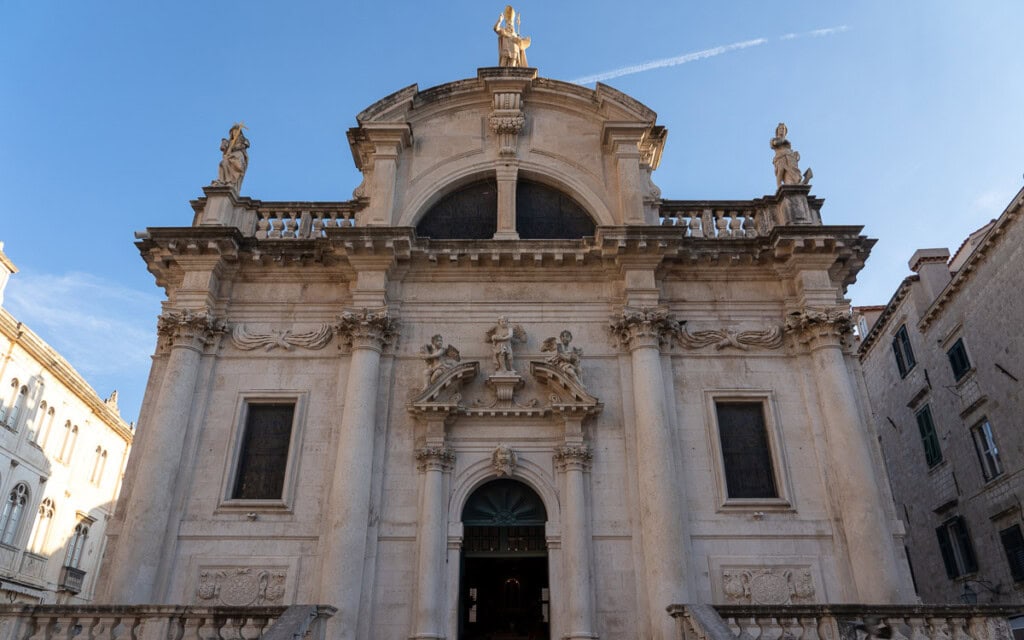
The Church of St. Blaise, located on the eastern end of Stradun, is one of the most iconic and famous landmarks in Dubrovnik, Croatia. The church, dedicated to Saint Blaise, the patron saint of Dubrovnik, dates back to the early 18th century. A Romanesque church stood at this location from the 14th century until the middle of the 17th century.
Luža Square
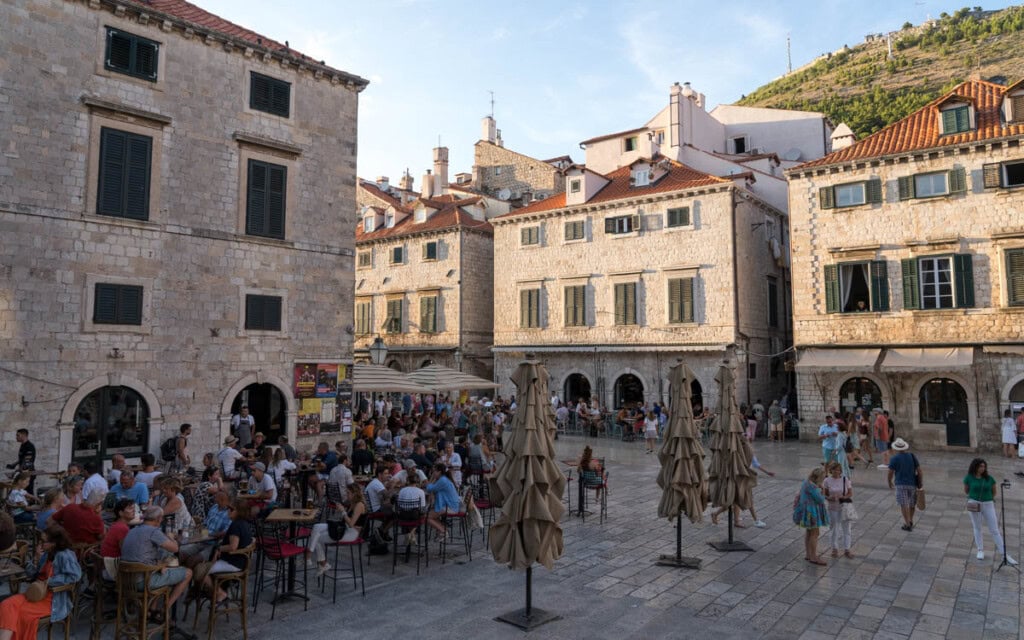
Luža Square, at the eastern end of Stradun, is one of Dubrovnik's busiest and most historically significant central squares. It has been an important meeting point for centuries and is home to some of the city's most significant landmarks, making it a must-visit spot in the Old Town. Since the Middle Ages, Luža Square has been a central meeting place for citizens of the Republic of Ragusa, present-day Dubrovnik.